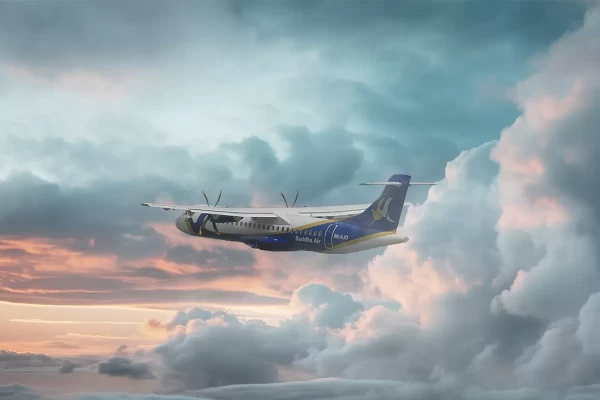Impact of Weather on Flight and Its Importance in Aviation

Flying is one of the safest and most efficient modes of travel, connecting distant parts of the world within a matter of hours. However, the impact of weather on flight operations is a crucial factor that passengers and airlines must consider on both ends. Weather conditions can significantly influence flight schedules, safety, and overall travel experience. As the Monsoon continues, it is essential to be cautious of what it means when the weather suddenly changes at your destination or en route and your ever-so-awaited flight gets delayed. Understanding the impact of weather on flights can help you prepare better.
Here's a comprehensive guide that delves into how weather affects flights, exploring the science behind weather-related flight delays and the importance of weather in aviation
Impact of Weather on Flight
Weather Flight Delays
Weather is one of the primary causes of flight delays. Adverse weather conditions such as heavy rain, thunderstorms, fog, wind, and hailstones can disrupt flight schedules. For instance, thunderstorms can cause turbulence, lightning strikes, and severe wind shear, making it unsafe for aircraft to take off or land. Similarly, heavy rain can reduce visibility and affect runway traction. That is why, on occasion of any sudden weather change, your flight may be significantly delayed. Pilots take absolutely no risk and would rather wait and fly when the sky gets clearer and safer.
Fog is another significant factor contributing to weather flight delays. When visibility drops below the minimum required for safe takeoff and landing, flights must be delayed or diverted to alternate airports. Snow and ice pose their own set of challenges in the upper regions of Nepal, as they can accumulate on aircraft surfaces and runways, necessitating de-icing procedures and runway clearance operations. These processes can add substantial time to flight schedules, resulting in delays.
Weather on Flight Route
Weather on the flight route, also known as en route weather, is equally important as the weather at the departure and arrival airports. Pilots and airline operations teams constantly check the weather on the flight path to ensure a safe and smooth journey.
Turbulence, for example, is a common weather-related issue encountered during flights. Turbulence can be caused by various factors, including jet streams, mountain waves, varying wind temperatures, and convective activity such as thunderstorms. While turbulence is generally not dangerous, it can be uncomfortable and unnerving for passengers and may require pilots to adjust the flight altitude or route to avoid the rough air.
Jet streams, which are fast-flowing air currents in the atmosphere, can also impact flight routes. Pilots often plan their routes to take advantage of tailwinds provided by jet streams to reduce flight time and fuel consumption. Similarly, headwinds from jet streams can slow down flights and increase fuel usage. Clear-air turbulence, which occurs without visible weather phenomena like clouds or storms, is particularly challenging as it is difficult to predict and avoid.
Importance of Weather in Aviation
The importance of weather in aviation cannot be ignored or overstated. Accurate weather forecasting and real-time weather updates are essential for safe flight operations. Meteorologists play a crucial role in aviation, providing weather data and forecasts that help airlines plan their routes and schedules. Airports and air traffic control (ATC) systems also rely heavily on weather information to manage air traffic efficiently.
Weather-related tools and technologies, such as Doppler radar, satellite imagery, and weather stations, are important in monitoring and predicting weather conditions. Pilots use onboard weather radar and other instruments to detect weather patterns and make informed decisions during flights. The ability to anticipate and respond to weather conditions ensures the safety and efficiency of flight operations.
Conclusion
The impact of weather on flight operations is a complex and multifaceted issue that affects both airlines and passengers. Weather conditions can lead to delays, route adjustments, and even cancellations, emphasizing the importance of accurate weather forecasting and real-time updates in aviation. Understanding the impact of weather on flying helps passengers manage their travel expectations and appreciate the efforts made by airlines and aviation professionals to ensure safe and efficient flights. By staying informed and prepared, travellers can get past the challenges that come with the weather and enjoy a fun, smooth flying experience.
FAQs
How does cold weather affect flight?
Cold weather can affect flights in several ways. Low temperatures can cause ice and frost to accumulate on aircraft surfaces, necessitating de-icing procedures before takeoff. Icy conditions on runways and taxiways can also reduce traction, affecting aircraft performance during takeoff and landing. Additionally, cold air is denser, which can improve engine performance but may require longer takeoff distances. Pilots and ground crews must take these factors into account to ensure safe operations.
Are flights affected by the weather?
Yes, flights are significantly affected by weather conditions. Adverse weather such as thunderstorms, heavy rain, fog, hail storms, and storms can lead to flight delays, diversions, and cancellations. Weather conditions at both the departure and arrival airports, as well as along the flight route, must be carefully considered to ensure safe and efficient flight operations. Airlines and aviation authorities use advanced weather forecasting tools and real-time updates to manage and mitigate the impact of weather on flights.
How are airlines affected by climate change?
Climate change poses several challenges to airlines and the aviation industry. Increased frequency and intensity of extreme weather events, especially when sudden, such as storms, hurricanes, and heat waves, can disrupt flight operations and increase maintenance costs. Rising temperatures can also affect aircraft performance, requiring longer takeoff distances and reducing payload capacity. Changing weather patterns may also alter flight routes and increase the possibility of turbulence. Airlines are investing in sustainable practices and advanced technologies to mitigate the impact of climate change and ensure the long-term viability of air travel.
